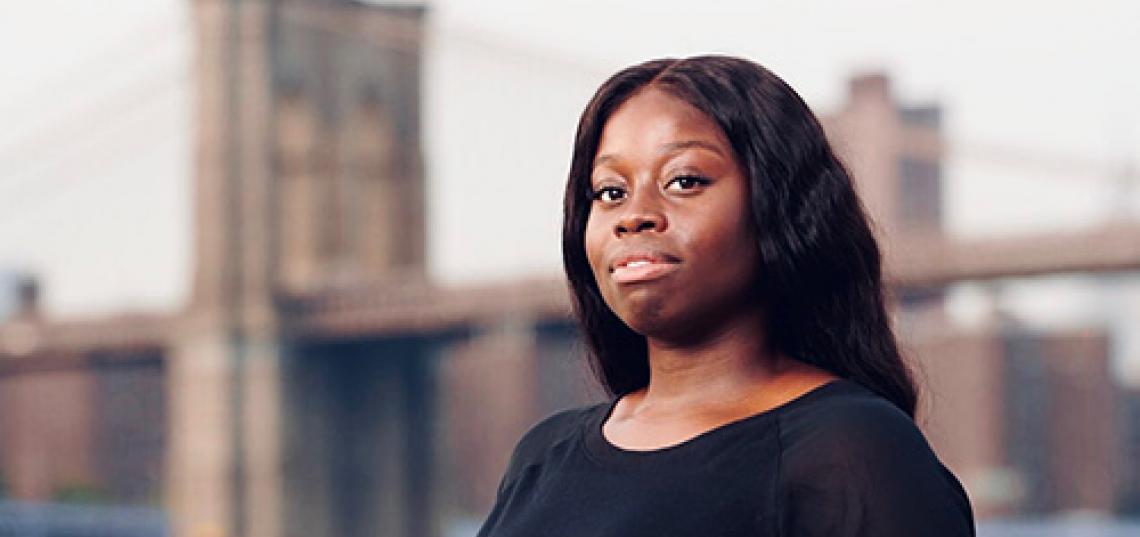
Understanding the many possible forms of discrimination marginalized teenagers could face if they use social media to express their personal experiences and work to create social change can help experts determine the best ways to support them, according to new research by Amana Kaskazi, Ph.D. ’21.
Creating support networks for marginalized youth is vitally important today, Kaskazi said, because of the disproportionate impact the COVID-19 pandemic and the Black Lives Matter movement protests have had on them.
“The experiences of youth today are vastly more altered by technology than that of generations before them, particularly for marginalized youth. Only by recognizing those changes can scholars, parents, and others understand the affordances and consequences of digital, political engagement.”
In her findings, published in the paper “The crises of 2020: the effects of intersectionality and virality on marginalized youth in the U.S.” in the Journal of Children and Media, Kaskazi describes the twin forces marginalized youth must grapple with if they decide to use social media as a form of social activism: intersectionality and virality.
Intersectionality, Kaskazi said, refers to the many overlapping forms of oppression marginalized American youth often experience because they don’t usually belong to just one marginalized group. Depending upon their race, gender, immigrant status, class, and disabilities, they can have multiple identities as marginalized people that form their social identities and affect their lives in many ways.
“Virality,” Kaskazi said, refers to “the ability for something to be circulated quickly and widely from one person to another.” In other words, when marginalized American teens posts their opinions and experiences on social media, their posts are spread so widely and rapidly that their virality could make them an even greater target of harassment and discrimination both online and on the street.
Understanding virality in this context separates Kaskazi’s work from that of other scholars whom she said have limited their research focus to the social media posts of marginalized youth and the influence their postings have had.
While such studies are important, Kaskazi said, “there has been little discussion about the role of virality in these converging crises and the ways youth with marginalized identities respond to them.”
“My findings suggest that both intersectionality and virality play a major role in how and why marginalized youth participate in social activism, both online and on the ground,” Kaskazi said. “The experiences of youth today are vastly more altered by technology than that of generations before them, particularly for marginalized youth. Only by recognizing those changes can scholars, parents, and others understand the affordances and consequences of digital, political engagement.”
During her dissertation research, Kaskazi investigated the experiences of Royal Chao, a 16-year-old Asian American woman.
Chao has been exposed to additional anti-Asian harassment as a result of her presence online as a social activist, which has discouraged her from posting again, effectively silencing herself.
“There has been little discussion about the role of virality in these converging crises and the ways youth with marginalized identities respond to them.”
In addition, Kaskazi wrote in the paper, another barrier preventing Chao from using social media to voice her opinions on social issues is her mother, who is worried her young daughter will expose herself to even more harassment and even danger if she has a well-known online social media presence and calls attention to herself by voicing her personal opinions.
“Royal, like many of the other teens in my dissertation research,” Kaskazi said, “wants to use digital media as an activism tool and attend protests with her peers. They are more likely to use non-institutionalized practices, such as participating in a hashtag movement, and producing and circulating their own media within and beyond their social network. However, age, culture, and other identities make it challenging for them to do so.
“Social media has and should be harnessed to support crisis response and provide youth the opportunity to voice their experiences and engage with others. However, we must examine and understand the interconnectedness and overlapping systems of discrimination that expose and exacerbate inequities and the way intersectional identities influence how marginalized youth respond to the viral messages that accompanied the crises of 2020,” Kaskazi said.
Discover more information about the Ph.D. Program at the Rutgers School of Communication and Information on the website.
Photo: Courtesy of Amana Kaskazi, Ph.D. ’21
